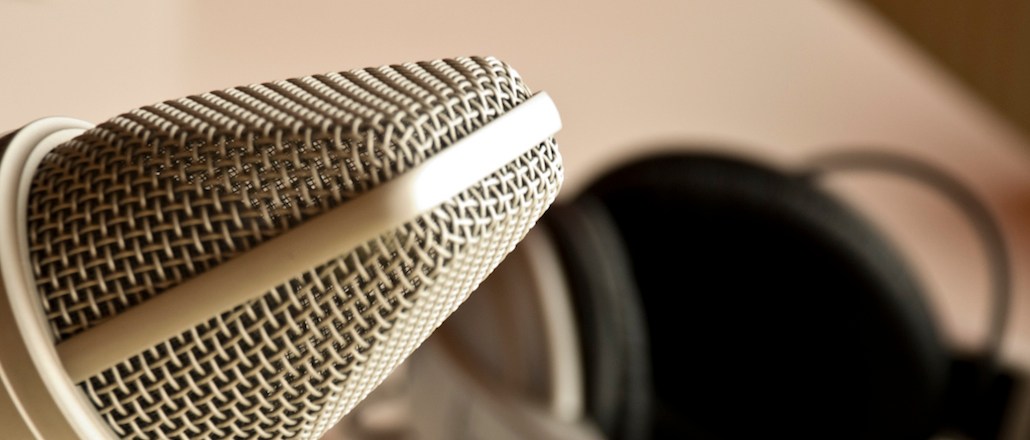
It’s tough to make a viable business from local online news, as evidenced by efforts like AOL’s Patch. But the revival of podcasting is leading some networks to believe a local model can apply to the audio format.
Washington, D.C., podcast network Goat Rodeo launched last week and is betting that it can make a business of podcasts that aren’t trying to be the next “Serial.” Its four shows — “Revivalism,” “Plaid Avenger Takes on The World,” “Inside Baseball” and “The Goat Rodeo” — take an insider’s view on D.C. goings-on, with local hosts and guests focused on politics and other local concerns. The Goat Rodeo’s first episode features an interview with California congressman Mike Honda.
“The idea of ‘local’ is going away on the terrestrial side of audio,” said Goat Rodeo CEO Ian Enright. “This push to monetize has forced everyone to homogenize in some way. In the podcasting ecosystem, you need local newspapers as much as you need The Washington Post.”
The Goat Rodeo’s pitch to advertisers is built around the idea that podcast listeners, however limited in number, are highly engaged and hence attractive targets for local businesses looking to be a part of the conversation. The network, which plans to make money via short, midroll ad spots read by hosts, roped in an early sponsor with Virgina-based Coffitivity.
It’s a strategy shared by the like-minded Chicago Podcast Collective, which has attracted a handful of Chicago-area advertisers such as Emporium arcade and Makespace. Enright said that local podcast networks are a better fit for regional advertisers compared to larger networks, which hefty minimum buy-ins make them out of reach for most brands. “For a lot of these advertisers, the question is essentially, how do I get someone off the street and into my bar?” said Enright.
That local focus flouts the conventional strategy for most podcasts, which are fixated on reaching the likes of Squarespace and Audible, not local mom-and-pop shops. That means potentially larger audiences, which is why even podcasts born out of local public radio stations typically cover topics more universal than what happens in their own cities and communities.
The podcast network is already feeling those constraints. The first episodes of both “Goat Radio” and “Revivalism,” which were uploaded to Soundcloud last week, have together been listened to fewer than 600 times so far.
[soundcloud url=”https://api.soundcloud.com/tracks/225976523″ params=”color=ff5500&auto_play=false&hide_related=false&show_comments=true&show_user=true&show_reposts=false” width=”100%” height=”166″ iframe=”true” /]
The limited audience reach of local coverage is why many local media operations are increasingly uncomfortable in their own shoes. Salmon-colored weekly newspaper The New York Observer rebranded to “The Observer” last year in a bid for broader relevance. Likewise, The Daily News has distanced itself from its tabloid roots to become a more national destination. Similarly, local podcasts will have to figure out a way to attract bigger audience numbers if they want to be relevant with brands.
“When it comes to podcasts, large audiences are not only easier to sell, but they’re basically a requirement for advertisers to decide if they’re going to allocate the time and investment in the podcast in the first place,” said Mark McCrery, CEO of Podtrac, which helps publishers grow their audiences and sell them to advertisers.
This is why the sweet spot for any local podcast is covering local issues but in a way that appeals to broader audiences, said Josh Stearns, director of journalism and sustainability at the Geraldine R. Dodge Foundation. “All of these could find niches outside of local audience even if they have that local lens,” he said.
Photo: Flickr/Patrick Breitenbach
More in Media

Digiday+ Research: Publishers’ growing focus on video doesn’t translate to social platforms
Major publishers have made recent investments in vertical video, but that shift is not carrying over to social media platforms.

Technology x humanity: A conversation with Dayforce’s Amy Capellanti-Wolf
Capellanti-Wolf shared insight on everything from navigating AI adoption and combating burnout to rethinking talent strategies.

How The Arena Group is rewriting its commercial playbook for the zero-click era
The company is testing AI-powered content recommendation models to keep readers moving through its network of sites and, in doing so, bump up revenue per session – its core performance metric.





